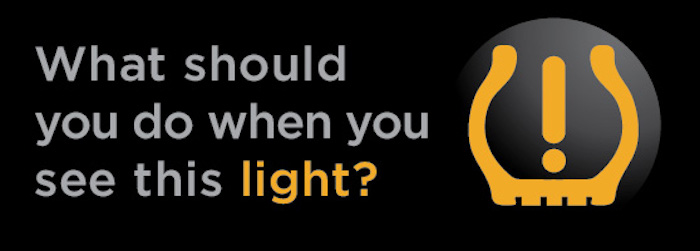

There are so many different warning lights on the dashboard that it can sometimes be confusing. If you have ever had the Tire Air Pressure Warning light come on, you may have wondered what it means and how you should handle it. This blog post will answer many, if not all of the questions you may have about the Tire Pressure Monitoring System.
Tire Pressure Monitoring Systems came about because of an increase in tire-related accidents. In the late 1990s, there was a Firestone recall that was linked to more than 100 deaths. As a result, the United States Congress enacted the TREAD Act that mandated the use of a Tire Pressure Monitoring System (TPMS) in all light motor vehicles. The purpose of the system is to alert drivers to the fact that one or more tires is under-inflated.
How does the Tire Pressure Monitoring System work?
There are two different types of tire pressure monitoring systems. Your vehicle is equipped with either an indirect or a direct TPMS. These two systems differ as follows:
- An indirect TPMS doesn’t actually measure the air pressure in your tires. Instead, it uses sensors that measure the rate of revolution for each wheel and send the information to the on-board computer system. The computer then calculates the data to identify the relative size of each tire in comparison to the speed you are driving. When one or more wheels start to spin faster than expected, the system turns on the tire pressure warning light to alert you to a problem.
- A direct TPMS uses individual sensors located within each tire to measure the actual air pressure. Just like with the indirect system, data from the sensors is sent (in this case wirelessly) to the on-board computer. If the TPMS determines that the tire pressure is low (falls below a pre-set threshold), the computer will turn on the tire pressure warning light. When you replace your tires, the tire pressure sensors must be reset for the system to operate properly.
How do I get the tire air pressure warning light to turn off?
The answer to this question depends on what caused the tire air pressure warning light to come on:
- If the warning light comes on while you are driving, pull over to a safe location and check the tire air pressure. A nail or piece of debris could have punctured the tire and it is losing air quickly. If a flat tire isn’t immediately apparent, check the air pressure in each tire using a tire gauge. If the air pressure in each tire is fine, the light may have been triggered because of a problem with the Tire Pressure Monitoring System. You will need to have the system checked and repaired.
- If it’s cold outside and the light comes on in the morning or after several hours of your vehicle sitting, check the tire pressure and add air, as needed. When it’s cold outside, the tire air pressure will be lower than when it is warmer outside. As you begin to drive, the air inside the tire heats up and expands. If the air pressure goes below the threshold for the TPMS, the tire pressure the TPMS will turn on the warning light. When adding air, make sure you fill the tire to the recommended air pressure found on the label inside the driver’s side door.
Quick Tip: On some vehicles, The TPMS Warning Light will need to be reset once you add air to the tire(s). This can be accomplished by pressing a reset button on your instrument panel.
The TPMS light won’t turn off (or it came back on). Now what?
If you added air and the light is still on, reset the TPMS warning light on your instrument panel (if equipped with this feature). When the tire pressure warning light won’t turn off it is usually because of a faulty pressure sensor in one or more of the wheels, one or more of the batteries in the tire pressure sensor has gone bad, or there is an internal fault in the system. You will need to replace the tire pressure sensor.
In some cases, a slow leak in the tire will cause the tire air pressure warning light to come back on. Check the tire pressure again and if you had to re-add air, you know there’s a slow leak. Have the tire repaired or replaced.
Quick Tip: For an Indirect TPMS, if the light comes on and stays on, there may be a faulty wheel speed sensor. Typically, if this is the case, the ABS Warning Light will also come on.
Colonial Service Station in Staten Island, NY, can handle all your tire needs.
The tires on your vehicle should be thought of as a safety feature. It takes proper care to make sure they will last their expected lifetime. If you are experiencing problems with the TPMS, you need to have a tire repaired, or you want to purchase new tires, we can assist you. Contact Colonial Service Station today for all your vehicle needs.
